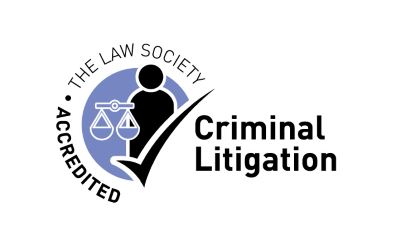We have specialists in many areas of legal practice. Make an enquiry today: 0330 333 2613
What You Need to Know About Property Boundaries and Disputes

Do you know where your property boundaries are? If you are a property owner, you may think that you do, but you may be surprised to learn that the exact location of your legal boundary is not always clear or obvious.
This can cause problems when you want to do something with your property, such as building an extension, installing a fence, or selling your property. It can also lead to disputes with your neighbour if you disagree on who owns or maintains the boundary features, such as fences, walls, hedges, or ditches.
In this post, we will explain why finding your legal boundary can be difficult, and what you can do to find out more information.
Why Finding Your Legal Boundary Can Be Difficult
One of the main reasons why finding your legal boundary can be difficult is that HM Land Registry, the government agency that registers the ownership of land and property in England and Wales, does not always have the precise information about the legal boundaries of each property.
This is because the title plans that HM Land Registry provides are based on large-scale Ordnance Survey maps, which are not accurate enough to show the exact position of the legal boundary. The title plans only show the general boundaries of the property, which may not match the physical features on the ground, such as fences, walls, hedges, or ditches.
Therefore, HM Land Registry cannot tell you where your legal boundary is or which boundary feature you are responsible for maintaining. You will need to look at other sources of evidence to determine this.
What You Can Do to Find Out More Information
Some of the things that you can do to find out more information about your legal boundary are:
- Check the deeds of your property and your neighbour’s property. These are the legal documents that transfer the ownership of the land and property. They may contain descriptions, measurements, or plans that indicate the legal boundary or the responsibility for the boundary features. However, not all deeds have this information, and some may be unclear, outdated, or inaccurate.
- Check the physical features on the ground. These are the boundary features that you and your neighbour can see and touch, such as fences, walls, hedges, or ditches. They may indicate the legal boundary, but they may also have been changed, moved, or removed over time. You will need to check if they match the deeds or other evidence, and if they have been agreed by you and your neighbour.
- Check the historical evidence. This is the evidence that shows how the land and property have been used and occupied over time, such as aerial photographs, old maps, or witness statements. They may show the original position of the legal boundary, the boundary features, or any changes that have been made over time. However, they may not be conclusive or reliable, and they may not reflect the current situation.
- Get expert advice. This is the advice that you can get from a professional, such as a chartered surveyor, a solicitor, or a mediator. They can help you interpret the evidence, measure the land, compare the plans and deeds, and resolve any disputes with your neighbour. They can also help you formalise your legal boundary or boundary agreement, if needed.
Find out some more information on HM Land Registry website Drawing the line on boundaries - HM Land Registry (blog.gov.uk)
How We Can Help You
If you need any help with finding out your legal boundary, or dealing with any property or boundary issues, please contact us at Elliot Mather LLP. We have a team of experienced residential and dispute resolution solicitors who can assist you with any legal matters related to your property. We can advise you on your rights and obligations, negotiate with your neighbour, and represent you in court if necessary. We can also help you with any other aspects of property law, such as conveyancing, leases, mortgages, planning, or development.
Please feel free to contact our offices and ask for our Conveyancing Team on 0330 333 2613 should you have any queries on the buying or selling process or would like a quote to act on your behalf. Quotes can be obtained free of charge, 7 days a week, 24 hours a day, via our website.

Andrew Yates
LLP Member and Head of DepartmentAndrew joined Elliot Mather LLP in 2000 as a Legal Executive and subsequently qualified as a Solicitor. He has been an LLP Member since 2008 and is now head of the Residential Property Department.
His vision, experience, knowledge and IT skills have been key to the development of the Residential Property Departments across the practice over the last 15 years. Andrew has a wealth of experience of all types of property transactions and specialises in:-
- Residential sales and services and purchases.
- Rights to buy
- Transfer of equity
- Re-mortgage/bank security
- Equity release
- Deed of Easements
- New Builds
- Complex Legal Charges
- Declaration of Trust
- Property Developments
- Complex Property Transactions.
Andrew has a friendly, no nonsense approach to work which is appreciated by clients, Estate Agents, Developers and his staff alike.

Elliot Mather LLP maintains professional indemnity insurance in accordance with the rules of the Solicitors Regulation Authority. Details of the insurers and the territorial coverage of the policy are available for inspection at our offices.
Registered Office: St. Mary's Court, St. Mary's Gate, Chesterfield, Derbyshire, England, S41 7TD
VAT Number: 126 3019 03
Regulatory Notice: Elliot Mather LLP is a limited liability partnership. Partnership number OC321320.
Authorised and regulated by The Solicitors' Regulation Authority. To view code of conduct visit www.sra.org.uk/code-of-conduct.page










